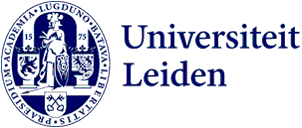Guidelines for ‘In the media’ pages
If a researcher has appeared on the TV or radio or in a newspaper, for example, you can create an ‘In the media’ page referring to this. How do you write a good ‘In the media’ page? Below are some guidelines.
General tips
- ‘In the media’ pages should not be long. A catchy headline, a short intro and one or two paragraphs with a link to the source will suffice.
- Avoid using jargon, officialese or the passive tense.
- Don’t copy large sections of text. This is plagiarism and is not allowed.
Headings
- Write a catchy heading (see C&M Academy on our website).
- The researcher’s name doesn’t have to appear in the heading.
- Use variety rather than always using the same ‘Sjaan de Vries in AD on...’ heading.
Intro
- The intro should be short and sweet. Make sure it is no more than 40 words.
- Mention the researcher’s name and role and where they appeared. You do not need to do so if you have already mentioned this in the heading.
- Don’t begin with a time expression (so not: ‘On 26 October...’, ‘Last week...’)
Article
- Write no more than two paragraphs after your intro.
- Paraphrase from the original article and include one or two appealing quotes.
- Always include a link to the source in or at the bottom of the text. Preferably use a link at the bottom of the text so that the reader will read to the end of the page.
- Put a euro sign in brackets after the link if the original is behind a paywall.
- Link bij voorkeur onderaan zodat de lezer niet eerder van de pagina weggaat
- Example: Read the full article in the AD newspaper [link]
- Don’t forget to add a general or academic keyword if applicable.
Photos
- For the header use a photo that says something about the topic at hand.
- Don’t include a photo of the researcher in the text. Their photo will appear in their profile in the right column.
- Don’t use the photo that was used in the original article unless you have purchased the rights.
Right column
- Always tag the academic’s profile along with the faculty and institute.
- As category in Bloomreach, only select ‘In the media’ and nothing else.
Example
Sjaan de Vries: ‘Wind turbines are dangerous for birds’
(intro) Scores of migratory birds collide with turbines every year. In the AD newspaper, Professor Sjaan de Vries explained why it is so difficult for them to change course.
(text) ‘Birds fly behind each other and can’t actually see that well’, De Vries explained in the article. ‘They mainly fly on instinct rather than relying on their eyesight.’ Research has shown that four times as many birds flew into turbines in 2023 than the year before.
De Vries thinks that if turbines had flashing neon lights, the birds would be more likely to change their route.
Read the full article in the AD newspaper (in Dutch).
